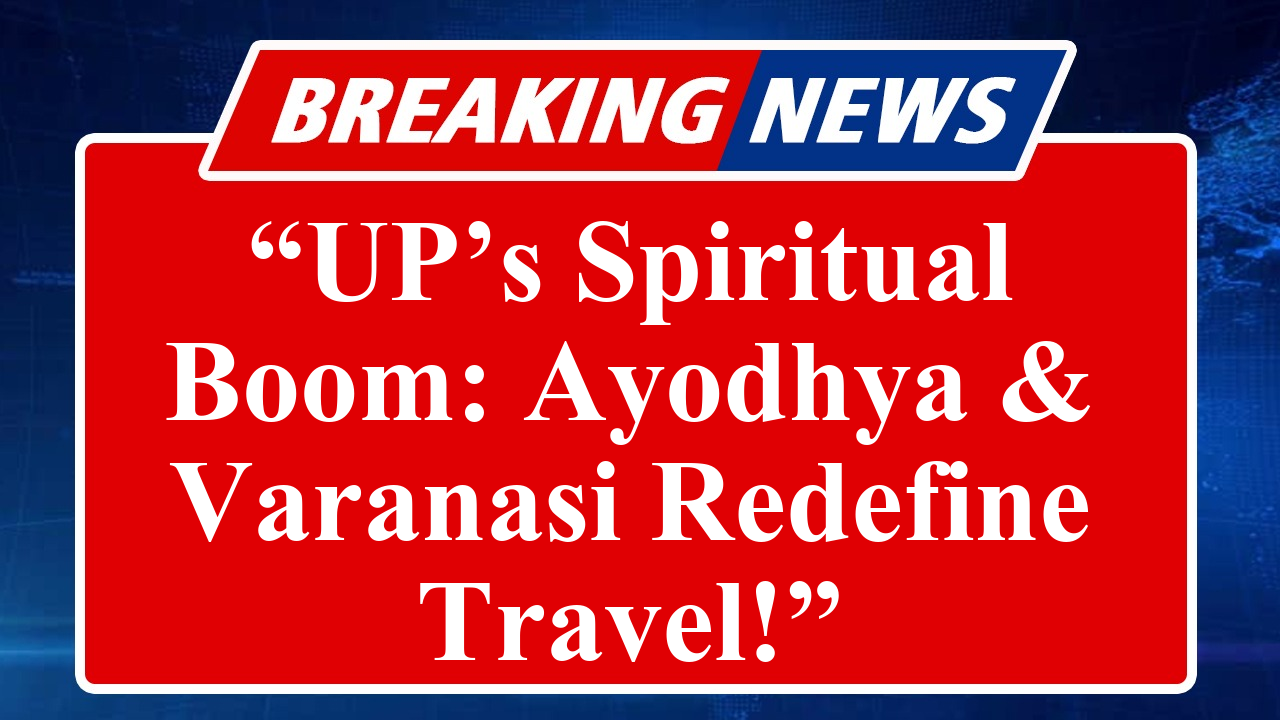“Uttar Pradesh is witnessing a spiritual tourism boom, fueled by new travel circuits connecting sacred sites like Ayodhya, Varanasi, and Kashi Vishwanath. Enhanced infrastructure, government initiatives like PRASHAD, and a 21.4% rise in spiritual tourism visas in 2025 are driving millions to these destinations, boosting local economies and creating jobs.”
Uttar Pradesh Emerges as Spiritual Tourism Hub with New Circuits
Uttar Pradesh is experiencing an unprecedented surge in spiritual tourism, cementing its position as a global pilgrimage destination. The state’s newly developed spiritual travel circuits, connecting iconic sites like Ayodhya, Varanasi, and Kashi Vishwanath, have drawn millions of domestic and international visitors in 2025. According to recent data, spiritual tourism accounts for over 60% of domestic travel in India, with Uttar Pradesh leading the charge.
The inauguration of the Ram Mandir in Ayodhya has been a game-changer, with the city witnessing a 35% increase in group travel for spiritual purposes. The Maha Kumbh 2025, a once-in-144-years event, is projected to attract 42 million pilgrims, further amplifying the state’s appeal. Atlys, a leading visa processing platform, reported a 21.4% rise in inbound spiritual tourism visas, driven by major religious events. Notably, 66% of millennial spiritual travelers are women, reflecting a demographic shift toward younger, experience-seeking visitors.
Government initiatives like the Pilgrimage Rejuvenation and Spiritual Heritage Augmentation Drive (PRASHAD) and Swadesh Darshan Scheme have been pivotal. These programs have modernized infrastructure, with new airports in Ayodhya and Varanasi, upgraded roads, and high-speed train connectivity reducing travel time between key sites. For instance, new roads have cut travel time between Varanasi and Ayodhya from six to four hours, boosting accessibility to Sarnath, a Buddhist pilgrimage site.
The economic impact is significant. Spiritual tourism in India is expected to generate ₹59 billion by 2028, with Uttar Pradesh’s sacred cities contributing substantially. In 2024, Varanasi’s Kashi Vishwanath Dham saw seven crore visitors post-renovation, up from 80 lakh the previous year. The hospitality sector is thriving, with hotels in spiritual hubs like Varanasi and Ayodhya reporting 90% occupancy rates, compared to 70% pre-pandemic. Average Room Rates (ARRs) are projected to reach ₹7,800–₹8,000 by FY2025.
Emerging cities like Prayagraj and Mathura are also gaining traction. The CBRE report identifies 14 Indian cities, including those in Uttar Pradesh, as key spiritual tourism hubs. Social media and improved connectivity have fueled this growth, with platforms like DharmikVibes offering seamless pilgrimage bookings and spiritual content. Millennials and Gen Z are increasingly drawn to “pilgrimage plus” tours, blending spiritual visits with yoga, meditation, and cultural immersion.
However, challenges remain. The rapid influx of tourists has raised concerns about environmental sustainability and overcrowding. Authorities are implementing responsible tourism practices, such as regulating visitor flows and improving waste management, to preserve the sanctity of these sites. The Parliamentary Standing Committee on Transport, Tourism, and Culture has urged the government to develop Standard Operating Procedures (SOPs) to ensure timely completion of spiritual tourism projects under PRASHAD and Swadesh Darshan.
The rise of interfaith tourism is another trend, with circuits combining Hindu, Buddhist, Sikh, and Sufi sites like Ajmer Sharif Dargah and Sarnath. This promotes cultural tolerance and attracts diverse global travelers. Digital innovations, such as hybrid pilgrimages integrating physical and virtual experiences, are also reshaping the sector. For instance, pilgrims can participate in Varanasi’s Ganga Aarti virtually while visiting other sites.
Uttar Pradesh’s spiritual tourism boom is not just a cultural revival but a robust economic driver. With continued infrastructure investments and a focus on sustainable practices, the state is poised to redefine India’s tourism landscape, blending ancient spirituality with modern accessibility.
Disclaimer: This article is based on recent news reports, industry analyses, and data from sources like Atlys, CBRE, and the Ministry of Tourism. Information is subject to change, and readers are advised to verify details independently.

